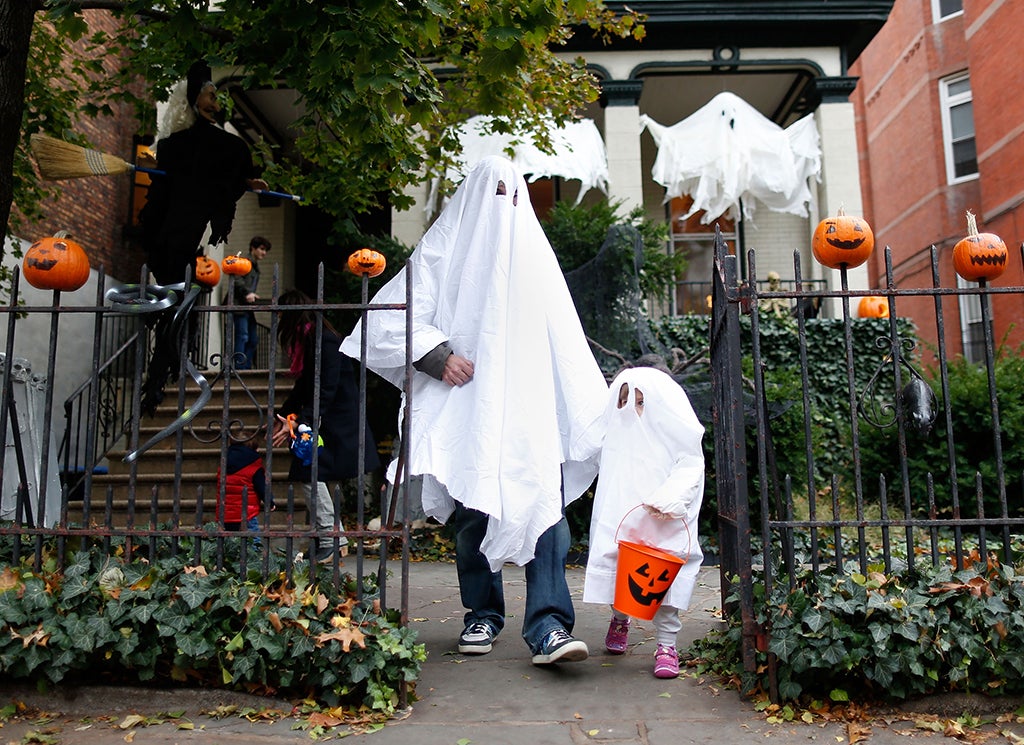How Halloween is celebrated around the world, from trick-or-treating to Mexico's Day of the Dead
By comparison, All Hallows' Eve in Britain is largely an understated affair
.jpg)
Your support helps us to tell the story
From reproductive rights to climate change to Big Tech, The Independent is on the ground when the story is developing. Whether it's investigating the financials of Elon Musk's pro-Trump PAC or producing our latest documentary, 'The A Word', which shines a light on the American women fighting for reproductive rights, we know how important it is to parse out the facts from the messaging.
At such a critical moment in US history, we need reporters on the ground. Your donation allows us to keep sending journalists to speak to both sides of the story.
The Independent is trusted by Americans across the entire political spectrum. And unlike many other quality news outlets, we choose not to lock Americans out of our reporting and analysis with paywalls. We believe quality journalism should be available to everyone, paid for by those who can afford it.
Your support makes all the difference.Love it, loathe it or simply tolerate it, Halloween is here, again.
Like most, I’ll be making a last-minute dash to the supermarket to buy cut-price confectionery to appease trick-or-treating teenagers and sugar-crazed six-year-olds, hoping desperately that I don’t get eggs thrown at my windows if I take too long answering the door.
An unwritten code of practice supposedly stops children knocking if you don’t have a pumpkin or lantern on display outside, so there’s always an optional black-out (though you might just get egged anyway).
It is easy to forget, when fishing lumpy bits of fruit from soggy, Halloween house party punch, where the festivities stem from. October 31 falls on All Hallows’ Eve, or Samhain (in Gaelic), which can be traced back 2,000 years to a pre-Christian Celtic festival marking the end of the summer and the changing of the seasons to winter.
In a nod to the festival’s pagan roots, this was thought to occur at a time when the line between the world of the living and the world of the dead was at its thinnest, and was followed by All Saints’ Day and All Souls’ Day – a ceremony to remember those who have died.
People had already begun wearing masks and costumes in an attempt to appease evil spirits, but the origin of the word itself, “Halloween” – meaning “hallowed or holy evening” – only came into regular use in around 1745.
Yet like so many events involving public spectacle or ritual humiliation, Halloween in Britain is largely an understated affair.
And while some still pay homage to long-forgotten traditions – the residents of Hinton St George in Somerset, for example, celebrate ‘Punkie Night’ with pumpkin carving and night-time walks on the last Thursday in October, stemming, the BBC has reported, from a tale of inebriated villagers whose wives carved mangelwurzels with candles inside them to light the way to drag them home – most of us stick to the relative safety of fancy dress witches, ghouls and vampires, donning face paint and sad hats, before taking a trip down the pub.

Not so, however, in the US – where trick or treating became “de rigeur” around the time of the Second World War.
It is thought that the practice may be related to “souling” – a medieval custom in Britain in which poor children would go house-to-house, knocking to ask for treats in exchange for prayers for the dead.
And the Americans have taken to it with true gusto – carving jack-o’-lanterns, making costumes, decorating front lawns with coffins, cobwebs, gravestones and ghouls. While it’s not an official holiday, it certainly feels like one.
It is a holiday – perhaps the most important holiday of all, however – in Mexico. The Day of the Dead, or Dia de los Muertos, which is thought to have been inherited from the Aztecs, is a blend of Spanish Catholic and pre-Hispanic beliefs; focusing on two separate days – one for deceased children (1 November) and one for deceased adults (2 November) – though celebrations begin on 31 October.
It is taken far more seriously than in the US and is viewed as a day of remembrance, marked by street parties, parades and visits to graveyards with food and gifts.
The commercialisation of Halloween has seen its popularity spread even to Asia – where it is marked in Japan, Hong Kong and the Philippines (although nominally, and mostly by gifts and commercial decoration).
In most of China, Korea and Singapore, Halloween is shunned in favour of July’s Festival of the Hungry Ghosts; when the dead are expected to visit those who mourn them.
Elaborate meals are served to empty seats, with relatives treating the deceased as if they are still living.
So whether you’re carving pumpkins, stuffing your face with sweets, making papier-mache spiders or – like me, heading to a “Mexican Death Disco” in Hackney, which promises a “journey to the spiritual afterlife” (by way of DJs and giant pinatas) – have a ghoulish, devilish, frightful(ish) Halloween. Until next year…
Join our commenting forum
Join thought-provoking conversations, follow other Independent readers and see their replies
Comments